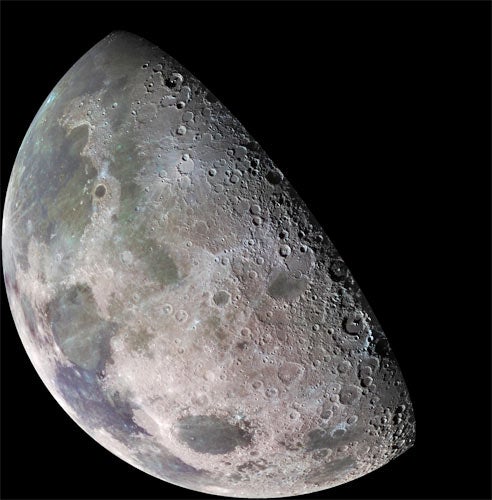The Big Splat: collision may have created lopsided Moon

Your support helps us to tell the story
From reproductive rights to climate change to Big Tech, The Independent is on the ground when the story is developing. Whether it's investigating the financials of Elon Musk's pro-Trump PAC or producing our latest documentary, 'The A Word', which shines a light on the American women fighting for reproductive rights, we know how important it is to parse out the facts from the messaging.
At such a critical moment in US history, we need reporters on the ground. Your donation allows us to keep sending journalists to speak to both sides of the story.
The Independent is trusted by Americans across the entire political spectrum. And unlike many other quality news outlets, we choose not to lock Americans out of our reporting and analysis with paywalls. We believe quality journalism should be available to everyone, paid for by those who can afford it.
Your support makes all the difference.The Earth may once have had two moons which collided several billions of years ago – not so much with a bang but with a "splat" – to form the lopsided lunar landscape that exists today, scientists said.
Astronomers have long wondered why the mountainous far side of the Moon with its thick crust is so different from the relatively flat, crater-filled near side that always faces the Earth.
Two planetary scientists have provided a possible answer to the conundrum with a computer model showing that the early Moon collided with a smaller companion which ended up being stuck on to the lunar far side.
The unequal nature of the collision produced a lopsided Moon and it could only have occurred in this way because it happened relatively slowly at less than the speed of sound, according to Erik Asphaug and Martin Jutzi at the University of California.
If the collision had happened any faster then a giant crater would have been created by the much smaller secondary moon, spreading the debris far and wide rather than concentrating it on just one of the lunar hemispheres, the researchers suggest in their study published in the journal Nature.
"It requires an odd collision. Being slow, it does not form a crater but splats material on to one side," Professor Asphaug said.
Join our commenting forum
Join thought-provoking conversations, follow other Independent readers and see their replies
Comments